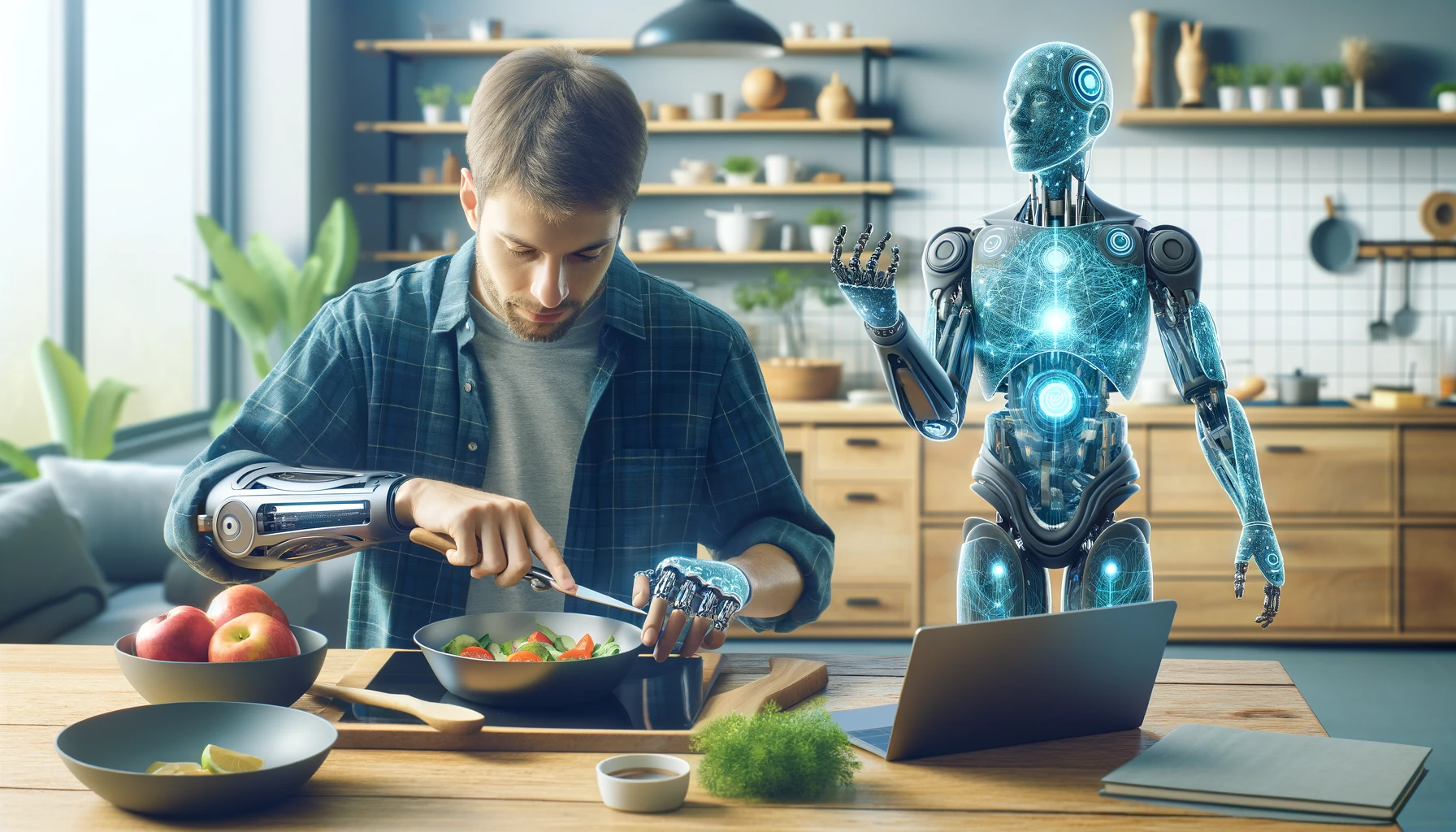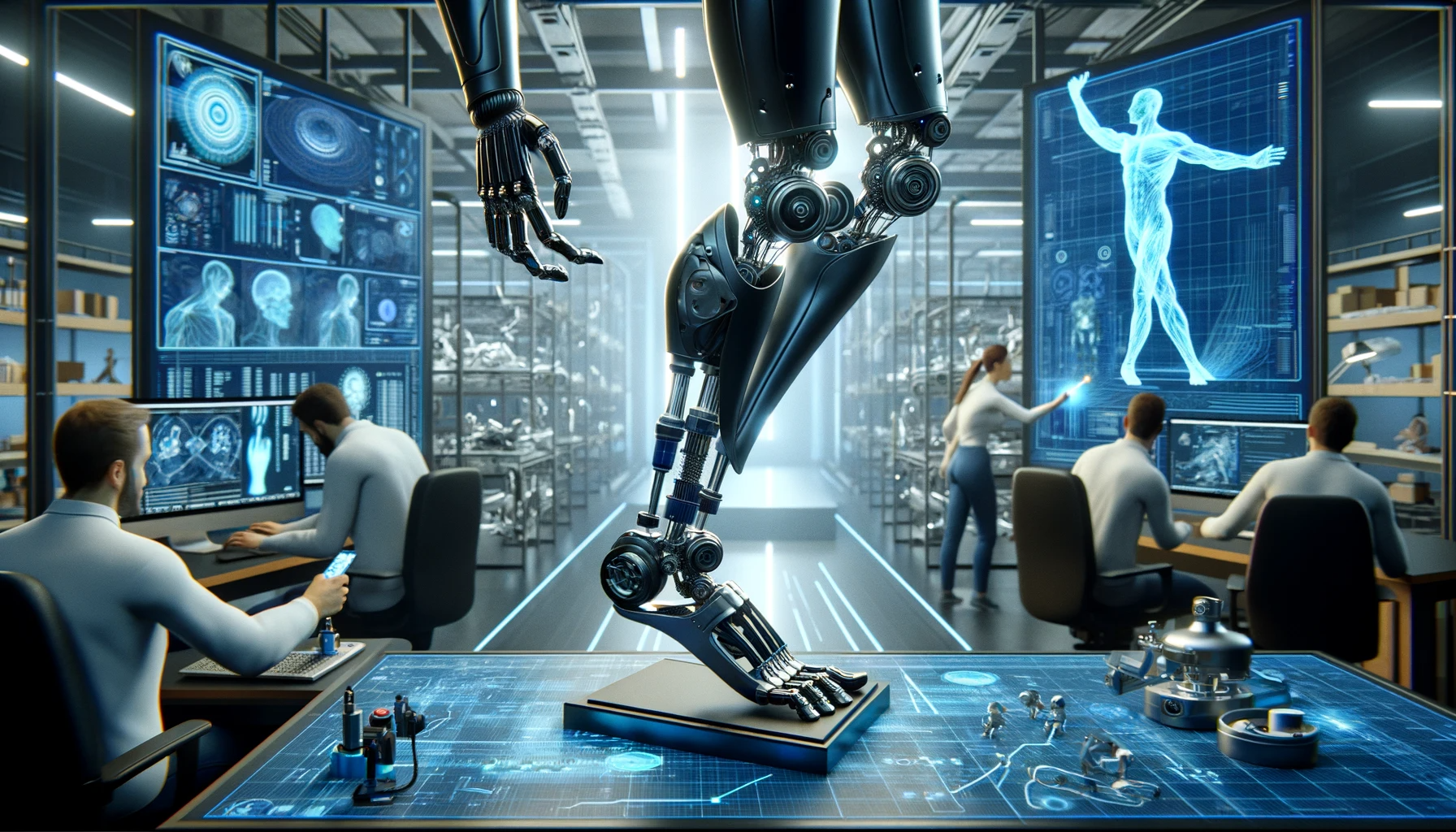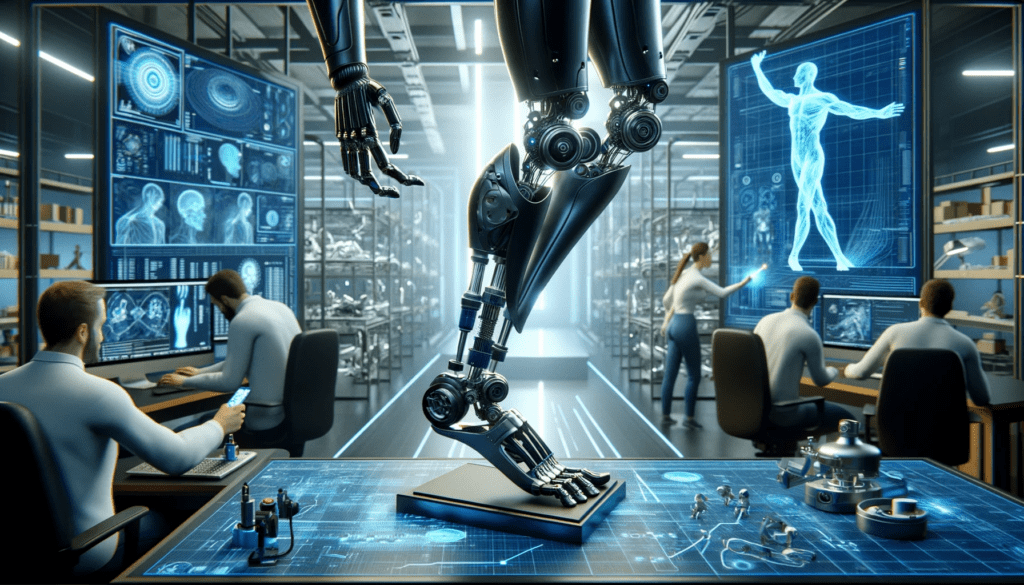Explore the Convergence of AI and Prosthetics for Unmatched Functionality
The field of prosthetics, dedicated to designing and creating artificial limbs, has been a beacon of hope and innovation for those who have lost limbs due to injury, disease, or congenital conditions. From the rudimentary prosthetic devices of ancient civilizations to the highly functional limbs of today, prosthetics have undergone a remarkable evolution. This evolution has not just been about replacing lost limbs, but also about restoring functionality, mobility, and improving the quality of life for amputees.
functionality, mobility, and improving the quality of life for amputees.
Throughout history, the development of prosthetic limbs has faced numerous challenges. Early prosthetics were primarily cosmetic, lacking functionality. Over time, advancements in materials and engineering led to more practical and user-friendly designs. However, the quest to create prosthetics that offer natural movement, adequate responsiveness, and ease of control has been ongoing. The primary challenge has been to develop prosthetics that can seamlessly integrate with the human body and replicate the complex movements of natural limbs.
Enter Artificial Intelligence (AI) – a transformative force poised to revolutionize the world of prosthetics. AI’s potential to enhance the functionality and responsiveness of prosthetic limbs is immense. By leveraging technologies such as machine learning, neural networks, and sophisticated algorithms, AI is set to address the longstanding limitations of traditional prosthetics. This article will explore how AI is contributing to the development of advanced prosthetic limbs, focusing on the improvements in functionality, responsiveness, and the overall impact on the user’s life. The integration of AI in prosthetics represents not just a technological leap, but also a new horizon of hope and possibilities for individuals relying on these vital devices.
The Evolution of Prosthetics
The history of prosthetics is a story of continuous evolution and innovation. From the wooden and metal limbs of ancient times to the sophisticated devices of today, prosthetics have been developed to restore lost function and improve the lives of those with limb amputations. Early prosthetics were basic in design, primarily aimed at being functional replacements without much focus on the natural movement or user comfort. These included the iconic iron and bronze limbs from ancient Rome and the wooden prosthetic toes from ancient Egypt.
As technological advancements were made, prosthetics evolved significantly. The Renaissance period saw the introduction of more articulated prosthetic limbs, with capabilities such as knee and elbow movement. The 20th century brought about a revolutionary change with the introduction of plastics and lightweight materials, making prosthetics more comfortable and wearable.
However, traditional prosthetics have had their limitations. They often lacked the ability to provide natural movement, were not always comfortable for long-term wear, and required a considerable effort for operation, which could be physically taxing for the user. The user experience was primarily focused on basic functionality, rather than intuitive use or comfort.
These limitations highlighted the need for more advanced and user-friendly prosthetic solutions. The goal was to develop prosthetics that could closely mimic the functionality of natural limbs, offering better control, comfort, and overall user experience. This need has paved the way for the integration of more sophisticated technologies, including AI, in the design and development of prosthetic limbs.
Introduction to AI in Prosthetics
Artificial Intelligence (AI) and its associated technologies have begun to play a transformative role in the field of prosthetics. AI, particularly through machine learning and neural networks, offers groundbreaking possibilities in prosthetic design and functionality. Machine learning algorithms can learn and adapt based on the user’s movements and patterns, while neural networks can interpret neural signals from the user’s body to control the prosthetic limb.
The incorporation of AI in prosthetics marks a significant advancement from traditional mechanical designs. AI-enabled prosthetics can interpret the user’s muscle movements and intended actions, allowing for more precise and natural control of the artificial limb. This not only enhances the functionality of the prosthetic but also improves the overall user experience by making the limb more intuitive and easier to use.
The potential benefits of AI in prosthetic technology are vast. AI-driven prosthetics can offer enhanced mobility, greater precision in movement, and a level of responsiveness that closely resembles that of a natural limb. This not only aids in the physical aspect of limb replacement but also positively impacts the psychological well-being of the user, as the prosthetic limb feels more like a part of their body.

AI-Enhanced Prosthetic Functionality
AI’s role in improving prosthetic functionality is multifaceted. One of the key areas where AI contributes significantly is in enhancing movement precision. AI algorithms can analyze data from sensors embedded in the prosthetic limb and the user’s residual limb to accurately interpret intended movements. This allows for smoother and more precise control of the prosthetic, be it in grasping objects or performing complex tasks.
Another application of AI in prosthetics is in enhancing grip strength and dexterity. Prosthetic hands and arms equipped with AI can adjust grip strength dynamically, enabling users to hold objects securely without exerting excessive pressure, which could be crucial in handling delicate items. Dexterity improvements include finer motor control, allowing users to perform tasks that require precision, such as typing or playing an instrument.
There are several examples of current AI-driven prosthetic limbs that demonstrate these capabilities. One notable example is an AI-powered prosthetic arm that uses machine learning to learn from the user’s movements, improving its functionality over time. Another example is a prosthetic hand that uses neural networks to provide highly responsive finger movements, enabling users to perform intricate tasks that were challenging with traditional prosthetics.
These advancements in AI-enhanced prosthetic functionality represent a significant leap forward in prosthetic technology. By offering more natural and intuitive control, AI-driven prosthetics are not just replacing lost limbs; they are restoring lost functionalities and, with them, a sense of normalcy and independence in the lives of amputees.
AI in Prosthetic Responsiveness and Control
Artificial Intelligence (AI) is playing a pivotal role in enhancing the responsiveness and control of prosthetic limbs, pushing the boundaries of what is possible in prosthetic technology. One of the key advancements is AI’s ability to interpret neural signals from the user, which enables prosthetics to mimic natural limb movements more closely. This is achieved through sophisticated algorithms that can decode the electrical signals generated by muscles in the residual limb. When a user intends to move their prosthetic limb, these signals are picked up, analyzed by the AI system, and translated into precise movements.
This breakthrough in AI technology has led to the development of prosthetics that offer a range of motion and control previously unattainable. For instance, advanced prosthetic hands now allow for individual finger movement and complex grips, enabling users to perform tasks with a level of dexterity that closely mirrors that of a natural hand.
Several case studies exemplify the success of AI in this field. A notable example is a bionic arm developed by a leading prosthetics company that uses machine learning to improve its functionality based on the user’s movement patterns. Another example is a research project where AI algorithms have been used to successfully decode neural signals to control a robotic arm, demonstrating the potential for more natural and intuitive control of prosthetic limbs.
Challenges and Future Directions
Despite the significant advancements, integrating AI into prosthetic development comes with its set of challenges. Technical complexities, such as accurately interpreting neural signals and ensuring reliable performance of AI algorithms, are major considerations. Furthermore, the cost of developing and producing AI-enhanced prosthetics can be prohibitive, limiting their accessibility and affordability.
Looking ahead, the future of AI-driven prosthetics is marked by potential innovations and areas for improvement. Future advancements may include more sophisticated neural interfaces, improved machine learning algorithms for even finer control, and the integration of sensory feedback systems that allow users to feel sensations through their prosthetics.
However, ensuring the accessibility and affordability of these advanced prosthetics is crucial. Efforts must be made to reduce production costs and increase insurance coverage or financial assistance for users. The goal is to make these life-changing technologies available to all who need them, regardless of economic status.
The Impact on Quality of Life
The impact of AI-enhanced prosthetics on the quality of life of users is profound. These advanced prosthetics offer not just physical benefits but also significant psychological and emotional improvements. Users report a greater sense of independence and normalcy, as they can perform daily tasks more efficiently and engage in activities they previously found challenging or impossible.
Adaptation to these high-tech prosthetics and the training required to use them effectively are crucial aspects of the user experience. Ongoing support, training, and rehabilitation are essential to help users fully utilize the capabilities of their AI-enhanced prosthetics and integrate them into their daily lives.
Moreover, the psychological implications of using advanced prosthetic limbs are significant. These prosthetics can greatly improve self-esteem and reduce the mental health impacts associated with limb loss, such as depression and anxiety. The sense of regained functionality and independence can be a powerful boost to the overall well-being of users.

Conclusion
In conclusion, the integration of AI in the development of advanced prosthetics represents a major leap forward in prosthetic technology. AI’s role in enhancing the functionality, responsiveness, and control of prosthetic limbs has the potential to revolutionize the field, significantly improving the user experience for individuals with limb amputations.
The advancements in AI-driven prosthetics promise not only physical restoration but also a restoration of independence and quality of life. However, addressing the challenges of cost and accessibility is imperative to ensure that these benefits can be experienced by all who need them.
Looking to the future, AI will undoubtedly continue to play a crucial role in shaping the field of prosthetics. Its potential to further enhance the functionality and intuitiveness of prosthetic limbs holds great promise, offering a new horizon of possibilities for individuals with limb loss. As technology continues to advance, the future of prosthetics with AI appears bright, marked by continuous innovation and an unwavering commitment to improving lives.
